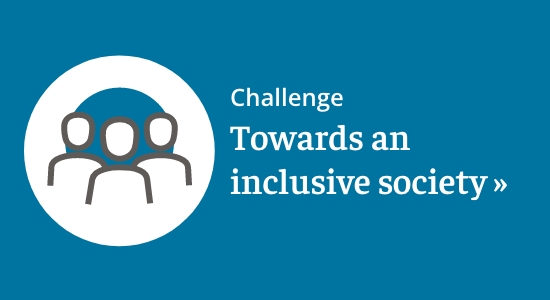
Visual decision aids support communication in healthcare: patients and healthcare providers are positive, more attention is needed for use in practice
Visual decision aids provide understandable information, in words and pictures, to support shared decision making in the consultation room. These aids are helpful for all patients, especially for patients with limited health literacy. Both patients and healthcare providers are positive about the visual decision aids. However, to support decision making in the consultation room the use of the aids needs more attention. This emerges from an exploratory study by Nivel and partners in which three visual decision aids were examined: one for 'permanent damage to your kidneys'; one for 'osteoarthritis in the knee'; and one for 'osteoarthritis in the hip'.
One in three Dutch people has difficulty finding their way in healthcare. Information about health and care is not explained to them in an understandable way. Patients' level of health literacy affects their understanding of diagnosis, outcome information and treatment options, and thus the process of shared decision making between patients and healthcare providers. In turn, that affects the outcomes of given care.
Patients and healthcare providers are positive about the visual decision aids
Healthcare providers within the specialty of kidney disease (nephrology), rheumatology and orthopedics are positive about the support the aids provide them in their consultations with patients. Patients, especially those with limited health literacy, are positive about the design, content and use of the visual decision aids. Healthcare providers and patients especially appreciate the overview page with all treatment options.
This is how I know I can see it. When he [the healthcare provider] tells me, I often don't understand him. When he shows me this, I see medicine, prick in the knee. Here they show an operation. With talking and pictures I understand betterPatient
Healthcare providers primarily use the overview page
The overview page of the visual decision aids is used most by the healthcare providers participating in this study. However, discussing the specific treatment pages, with the pros and cons of the treatment options, is also an important part of the shared decision-making process.
The overview chart is on the table and I point out the different treatment options. I give the visual decision aid to take home so the patient can think about it at homeCaregiver
Different use of the aids in different diseases, in outpatient clinics as well as in hospitals
The study also points to differences between hospitals in the use and implementation of the visual decision aids. These are used to a limited extent in osteoarthritis, in fact only with their introduction during this study. At the nephrology clinics, the aids had been introduced earlier in the consultation room and are now being implemented more widely.
Manual for use in the consulting room
To stimulate the use and implementation of the visual decision aids, the
user guide for healthcare providers has been adapted based on the findings of this study. For example, tips and example sentences have been added. In addition, a supporting video on the use of the visual decision aid has been created.
About the study
For this study, 35 video-recorded consultations between patients and healthcare providers were analyzed. In addition, 29 patients with different levels of health literacy were interviewed. Finally, nine health care providers working within nephrology, rheumatology or orthopedics from different hospitals were interviewed. They reflected on parts of their recorded consultations with a researcher. This study was a collaboration between Nivel, Pharos, IQHealth (Radboudumc), Kidney Patients Association (NVN), National Association of Rheumatology (RZN), Dutch Orthopedic Association (NOV), Dutch Federation of Nephrologists (NFN) and the Knowledge Institute of Medical Specialists. The study was funded by ZonMw.




